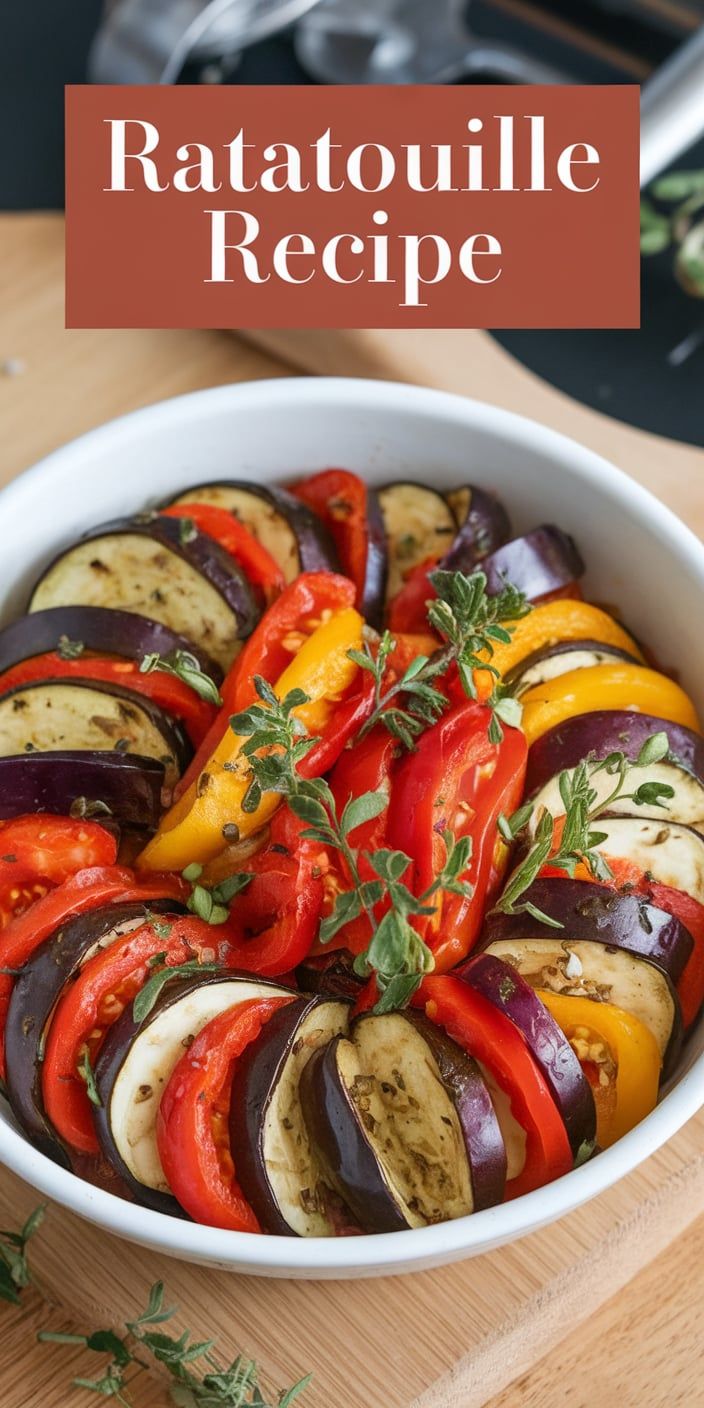Discover the vibrant world of ratatouille, a classic Mediterranean dish that brings the sun-drenched flavors of Provence directly to your kitchen. This traditional French cuisine masterpiece transforms simple vegetables into a culinary experience that delights both home cooks and professional chefs.
Our comprehensive ratatouille recipe will guide you through creating an authentic dish that captures the essence of Southern French cooking. Packed with fresh vegetables and rich Mediterranean seasonings, this recipe offers a healthy and delicious meal that celebrates the region’s incredible culinary heritage.
Key Takeaways
- Learn an authentic ratatouille recipe straight from Provence
- Explore the rich cultural significance of this Mediterranean dish
- Discover step-by-step cooking techniques for perfect results
- Understand the nutritional benefits of classic French vegetable preparation
- Master the art of layering and seasoning Mediterranean vegetables

What is Ratatouille and Its Mediterranean Origins
Ratatouille represents a vibrant celebration of Provence-style ratatouille, embodying the rich culinary heritage of Southern France. This iconic vegetable dish captures the essence of Mediterranean vegetables and French cooking traditions in a single, colorful preparation.
The origins of ratatouille trace back to the sunny landscapes of Provence, where local farmers transformed simple garden vegetables into a remarkably flavorful dish. Traditionally, peasant cooks would use whatever fresh produce was available, creating a resourceful and nutritious meal.
Traditional Preparation Techniques
Authentic Provence-style ratatouille requires careful vegetable selection and preparation. The key ingredients typically include:
- Ripe tomatoes
- Eggplant
- Zucchini
- Bell peppers
- Onions
- Garlic
Cultural Significance in French Cuisine
Ratatouille transcends being merely a side dish. It represents a culinary art form that reflects the terroir of Provence – the unique environmental context that shapes regional cooking. French families have passed down ratatouille recipes through generations, preserving a delicious piece of cultural memory.
Health Benefits of Mediterranean Vegetables
The Mediterranean vegetables used in ratatouille offer remarkable nutritional advantages. These ingredients are packed with antioxidants, vitamins, and minerals that support overall wellness. Low in calories and rich in nutrients, ratatouille exemplifies the healthy Mediterranean diet approach.
“Ratatouille is not just a dish, it’s a story of Provençal summers told through vegetables” – French Culinary Tradition
Essential Ingredients for Perfect Ratatouille Recipe
Creating an authentic ratatouille starts with selecting the right ratatouille ingredients. The magic of this classic French dish lies in using fresh vegetables at the peak of ripeness. Each ingredient plays a crucial role in building the rich, harmonious flavor profile that makes ratatouille a beloved Mediterranean classic.
The core fresh vegetables for a traditional ratatouille include:
- Ripe tomatoes
- Zucchini
- Eggplant
- Bell peppers (red and green)
- Yellow onions
Herbs for ratatouille are equally important in elevating the dish’s flavor. The traditional herb blend typically includes:
- Herbes de Provence blend
- Fresh basil leaves
- Thyme
- Rosemary
- Fresh parsley
Additional essential ingredients that bring depth to the recipe include:
- Extra virgin olive oil
- Garlic cloves
- Sea salt
- Freshly ground black pepper
“The secret to an amazing ratatouille is using the freshest vegetables and allowing their natural flavors to shine through.”
For those with dietary restrictions, the beauty of ratatouille lies in its versatility. You can easily adapt the recipe by substituting vegetables or adjusting the herb blend to suit your taste preferences.
Step-by-Step Cooking Instructions and Techniques
Mastering ratatouille cooking techniques requires careful preparation and attention to detail. This classic French vegetable dish transforms simple ingredients into a culinary masterpiece through precise cooking methods.
Vegetable Preparation Tips
Successful ratatouille begins with meticulous vegetable preparation. Select fresh, firm vegetables with vibrant colors. Here are key steps for preparing ingredients:
- Wash all vegetables thoroughly under cool running water
- Use a sharp knife for clean, uniform vegetable cuts
- Cut vegetables to approximately 1/8-inch thickness for optimal texture
- Remove excess moisture from sliced vegetables using paper towels
Layering and Seasoning Methods
Layering vegetables is crucial in creating an authentic ratatouille. The technique requires strategic placement and thoughtful seasoning to develop rich flavors:
- Begin with a base of thinly sliced onions and garlic
- Arrange vegetable slices in alternating circular patterns
- Sprinkle herbes de Provence between layers
- Drizzle extra virgin olive oil generously
Cooking Temperature and Timing Guide
Precise temperature control ensures perfect ratatouille. Slow, consistent cooking allows vegetables to soften and blend harmoniously:
- Preheat oven to 375°F (190°C)
- Cover dish with parchment paper initially
- Bake for approximately 45-50 minutes
- Uncover for final 15 minutes to achieve golden edges
Conclusion
Your journey through this classic French vegetable dish has been exciting and delicious. Ratatouille represents more than just a recipe—it’s a cultural experience that brings the vibrant flavors of Provence directly to your kitchen. By understanding the traditional techniques and ingredients, you’ve unlocked a culinary treasure that connects you to generations of French cooking traditions.
When serving ratatouille, consider multiple presentation options. This versatile French vegetable dish can be enjoyed as a side, main course, or even as a complementary element to grilled meats and fish. Experimenting with ratatouille variations allows you to personalize the recipe, adding your unique touch while respecting its rich Mediterranean roots.
The beauty of this dish lies in its simplicity and nutritional profile. Each colorful vegetable contributes essential nutrients, making ratatouille a wholesome choice for health-conscious food lovers. Whether you’re a seasoned cook or a kitchen novice, this recipe offers an accessible pathway to exploring French cuisine with confidence and creativity.
We invite you to share your ratatouille experience with friends and family. Capture the essence of Provence in your kitchen, and let this delightful recipe inspire your culinary adventures. Remember, cooking is about passion, connection, and joy—enjoy every moment of your gastronomic exploration!
